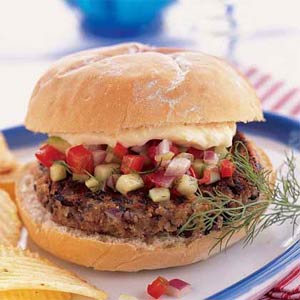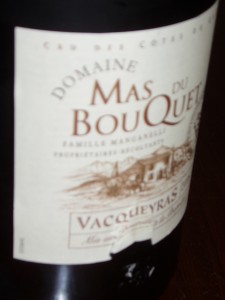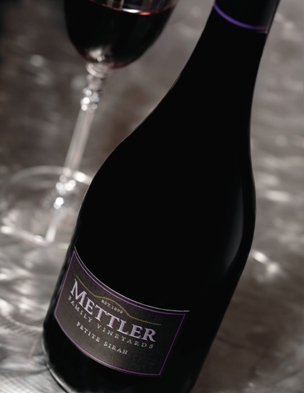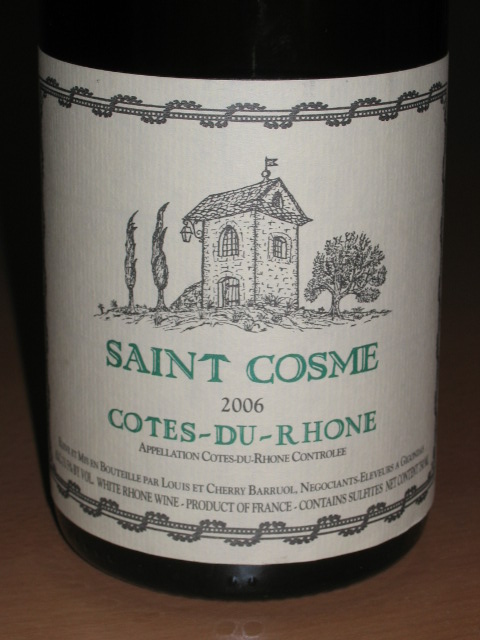 We started to revisit the topic of food and wine as a match made in heaven a few weeks ago... My family wine taste-off of sorts interrupted us for a week last week, but with the fourth of July grill fest soon to come, it seems prudent to re-tune the station to another of our Supper Swap success stories! So without further ado, here we have Episode #2 of our Supper Swap series: Black bean sliders!
The first time I tried my "Summer is Coming" black bean sliders recipe out on my fellow Swappers I discovered "it needed a little... tweaking", in the words of Tom Hanks in You've Got Mail. Not to worry. I excel at taking a base recipe and fine-tuning it for future endeavors. I discovered Sandra Lee's recipe lacked a bit of bite, sweetness and texture. The food processor process I employed the first time out of the gates ground everything to a paste; the flavors of each individual component couldn't possibly show through once "grilled". (I also learned the grill is not the cooking tool of choice....) Here's what I came up with as an alternative to this fast summer savior:
We started to revisit the topic of food and wine as a match made in heaven a few weeks ago... My family wine taste-off of sorts interrupted us for a week last week, but with the fourth of July grill fest soon to come, it seems prudent to re-tune the station to another of our Supper Swap success stories! So without further ado, here we have Episode #2 of our Supper Swap series: Black bean sliders!
The first time I tried my "Summer is Coming" black bean sliders recipe out on my fellow Swappers I discovered "it needed a little... tweaking", in the words of Tom Hanks in You've Got Mail. Not to worry. I excel at taking a base recipe and fine-tuning it for future endeavors. I discovered Sandra Lee's recipe lacked a bit of bite, sweetness and texture. The food processor process I employed the first time out of the gates ground everything to a paste; the flavors of each individual component couldn't possibly show through once "grilled". (I also learned the grill is not the cooking tool of choice....) Here's what I came up with as an alternative to this fast summer savior:
Ingredients - black beans (30 oz), 1/2 sweet onion, 1/2 cup of whole beets, 1/2 cup bread crumbs, 1 egg (white)
Directions - Pulse the beans LIGHTLY and in batches in your food processor. Place in bowl. Then pulse 1/2 cup of beets in your processor. (This adds additional flare, color and sweetness to the burgers without being over the top for those who may shy away from beets.) Dice sweet onion into small pieces by hand. Combine, adding black pepper and salt to taste. Then combine with egg and crumbs. Form patties.
Use a skillet to cook each side (about 4 or 5 min/side), til done.
Makes 5 Servings for a large burger, or about 7 sliders.
Serve on a large English muffin and - the key - use Greek yogurt as the topping. Add mango salsa for additional panache!
So, what wine works?
I had a bottle of the Nuevo Mundo Cabernet/Malbec on hand the first time I tasted these re-vamped burgers - and have lived to tell the tale again and again (just ask my poor colleague...)! But I've also given them a whirl with a Syrah-based Cote du Rhone as well as the Crios Syrah/Bonarda and been oh-so-satisfied. Basically, you want a lush and mouth-filling, deep, dark fruited red wine with a touch of herbaceousness and spice. Other blends that would work happily are the SNAFU (CA) and the Portteus Rattlesnake Red (WA). Or try a good old-fashioned, dark toned, (with chocolate subtones) Malbec!
The point is, these burgers aren't shy, but also offer a touch of spice and sweetness. A wine with dark but lush and sweet fruit or undertones (e.g. the chocolate thing) makes for a great pairing.
What other wines would you pair with such an easy-to-make, satisfying, hearty meal?


 We've had a lovely bender of 80 degree temps here in Beantown. Love it. My soul is being nourished with Vitamin D, my grill is getting some much needed TLC, and I have an "excuse" to drink red wines even when it is warm out.
This week I brought home a bottle of one of my all time favorite wines:
We've had a lovely bender of 80 degree temps here in Beantown. Love it. My soul is being nourished with Vitamin D, my grill is getting some much needed TLC, and I have an "excuse" to drink red wines even when it is warm out.
This week I brought home a bottle of one of my all time favorite wines:  What better way to continue our discussion about wines perfect for fall than to start the month of October with some banter about a monster wine? Petite Sirah (note the "i" in Sirah) is also a stealthy little operator, or the masked creature standing on your front steps in just 30 days time. Boo-ha-ha-ha-ha-ha!!!
"What the heck is she getting at today," you ask with incredible anticipation and a smile dancing at the corners of your mouth?
What better way to continue our discussion about wines perfect for fall than to start the month of October with some banter about a monster wine? Petite Sirah (note the "i" in Sirah) is also a stealthy little operator, or the masked creature standing on your front steps in just 30 days time. Boo-ha-ha-ha-ha-ha!!!
"What the heck is she getting at today," you ask with incredible anticipation and a smile dancing at the corners of your mouth?